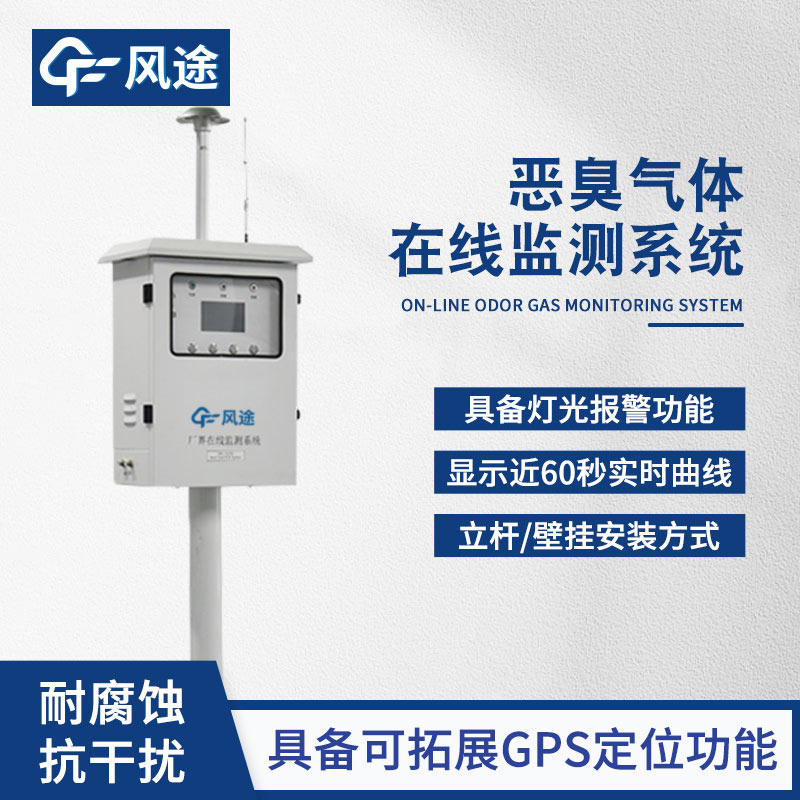Tianyi Sensor IOT Technology Co., Ltd
Sales Manager:Ms. Emily Wang
Cel,Whatsapp,Wechat:+86 15898932201
Email:info@fengtutec.com
Add:No. 155 Optoelectronic Industry Accelerator, Gaoxin District, Weifang, Shandong, China

Sales Manager:Ms. Emily Wang
Cel,Whatsapp,Wechat:+86 15898932201
Email:info@fengtutec.com
Add:No. 155 Optoelectronic Industry Accelerator, Gaoxin District, Weifang, Shandong, China
time:2025-10-14 08:55:24 source:Weather Station viewed:126 time
Odor online monitor is a professional instrument that utilizes sensor array technology to perform real-time, continuous automatic monitoring of complex odor concentrations and characteristic malodorous gases in the environment. It can quantify and output dimensionless odor concentration OU values and conduct quantitative analysis of various malodorous components.
It integrates multiple high-sensitivity sensors, including metal oxide semiconductor sensors (MOS), electrochemical sensors, and photoionization detectors (PID).
These sensors form a "sensor array," similar to a digital nose. When malodorous gases enter the device through the sampling unit, different sensors produce specific responses to various gas components and convert them into electrical signals.
Subsequently, the built-in processor comprehensively analyzes these complex signals and ultimately outputs odor concentration OU values that directly reflect human olfactory perception, as well as the concentrations of various characteristic gases.
Directly measuring and outputting dimensionless odor concentration OU values is a key comprehensive indicator for evaluating the degree of odor pollution.
In addition to OU values, the device can accurately monitor the concentrations of various common single malodorous gases, such as ammonia and hydrogen sulfide specified in the national standard "Emission Standards for Odor Pollutants (GB14554-93)". It can also monitor methyl mercaptan, dimethyl sulfide, dimethyl disulfide, styrene, volatile organic compounds (VOCs), etc.
Many devices also integrate modules for measuring environmental parameters such as temperature, humidity, and air pressure. This data helps to more accurately assess the diffusion and impact of odors.
This technology is mainly applied in scenarios with unorganized emissions or fixed pollution sources requiring continuous monitoring, including:
Environmental infrastructure - such as sewage treatment plants, landfills, waste incineration plants, garbage transfer stations, etc.
Industrial production parks - such as production plants or plant boundaries in industries like petrochemicals, pharmaceuticals, food processing, rubber, papermaking, livestock breeding, etc.
Environmental monitoring and traceability: Environmental protection departments use it for regional air quality monitoring, pollution source tracing analysis, and rapid response to residents' odor complaints. Through grid-based deployment or mobile inspections (including vehicle-mounted and portable devices), pollution sources can be accurately located.

As a convenient and efficient meteorological monitoring device, the performance improvement of the Portable Weather Station is closely related to the application of new ultrasonic sensors.The Portable Weather Station features small size, portability, easy installation and operation, enabling meteoro...
Compared with traditional embedded sensors, the Road Condition Sensor has obvious advantages in practical applications. It adopts non-intrusive installation, which does not require damaging the road structure. The installation process is simple and convenient, which can greatly reduce the impact of...
In the solar energy industry, the quality of photovoltaic (PV) modules affects their power generation efficiency, and the EL detector is an important tool for inspecting the quality of PV modules.The EL detector works based on the principle of electroluminescence. When a forward voltage is applied t...
Microwaves refer to electromagnetic waves with frequencies ranging from 300MHz to 300GHz and wavelengths from 1 millimeter to 1 meter. Due to their high frequency and short wavelength, they have strong directivity and penetrating power, enabling stable propagation under different meteorological cond...